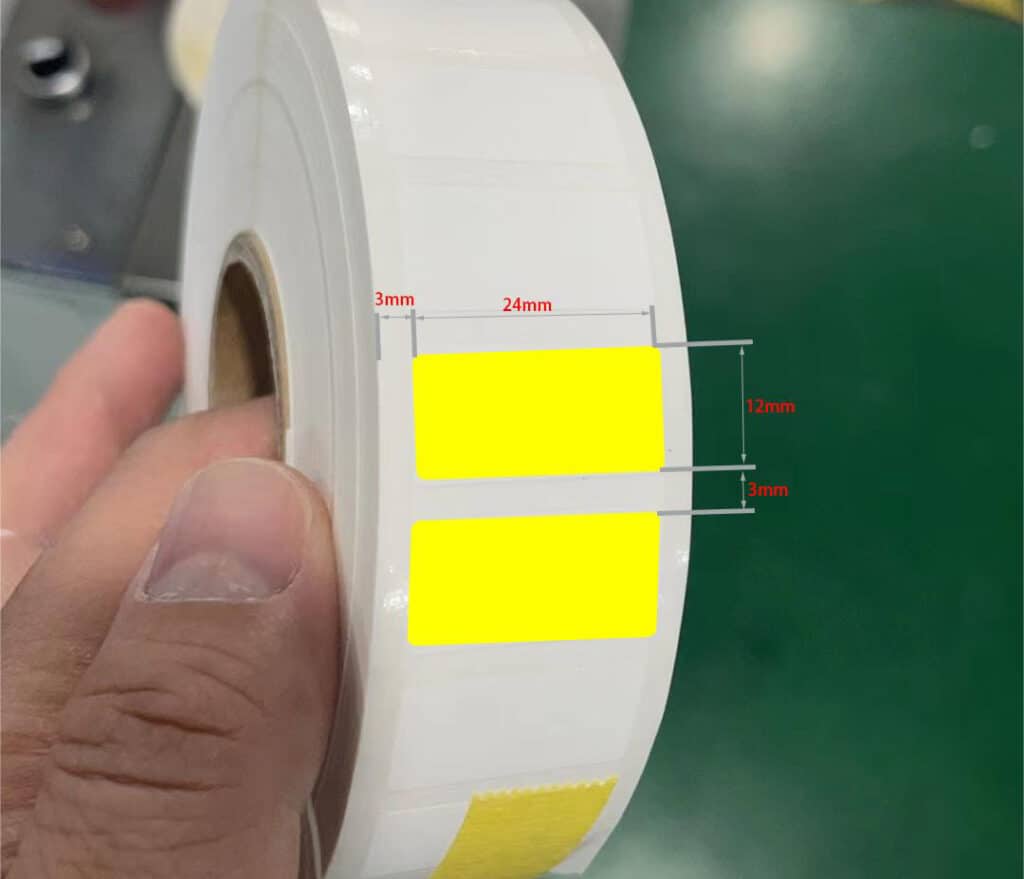In the precision-driven world of product labeling, especially when it comes to cable and rod labeling machines, consistency is key. But what happens when this precision is compromised by uneven gaps between labels? This seemingly minor flaw can lead to major disruptions in both the labeling process and the end product’s quality.
To manage labeling challenges caused by uneven gaps, it’s essential to first identify whether the issues stem from substandard labels, insufficient sensor sensitivity, or mechanical problems in the labeling machine. Immediate action includes stopping the machine to inspect and adjust the hardware, or consulting with the labeling department to check and possibly re-produce the labels. Regular quality checks, proper setup, and interdepartmental communication are crucial for preventing future occurrences and maintaining smooth labeling operations.
This guide provides detailed insights into managing uneven label gaps, ensuring that your labeling operations maintain high standards of accuracy and quality.

Identifying the Causes of Uneven Label Gaps
Substandard Labels and Their Impacts
One of the primary reasons for uneven gaps in labeling is the use of substandard labels. If the quality of the labels provided by the labeling department is compromised, it can lead to significant variations in gap sizes. These inconsistencies might be severe enough to necessitate a complete re-production of the labels to meet the required labels requirements.
Sensitivity Issues with Label Sensors
Another critical factor that can contribute to uneven gaps is the sensitivity of the label sensors. If these sensors fail to accurately detect each label, it can disrupt the entire labeling process. Ensuring that sensors are functioning correctly is crucial for maintaining the flow and accuracy of label application.

Mechanical Issues in the Labeling Machine
Mechanical issues within the cable labeler can also lead to uneven gaps. Problems such as a too-tight label loading frame or a too-loose grip on the labels can cause the labels to feed unevenly through the machine. This results in variable speeds of label application and potential errors in sensor readings.
How Uneven Label Gaps Affect Machine Operation
Disruptions in Label Output
Uneven label gaps can severely disrupt the normal operation of a cable labeling machine. Each component of the machine is designed to operate in sync, but irregular gaps can cause label sensors to misread and send incorrect signals to the machine’s operating system. This miscommunication may lead to labels not being dispensed properly or at the right time, impacting productivity and efficiency.
Operational and Financial Impacts
These disruptions not only affect the operational efficiency of the labeling machine but can also lead to increased waste of materials and higher operational costs. Frequent mislabeling or label wastage requires additional time for corrections and adjustments, thus reducing the overall throughput of the labeling process.
Managing Uneven Label Gaps During Operation
Immediate Response to Uneven Gaps
If uneven label gaps occur, the operation of the labeling equipment should be halted immediately to prevent further errors. The first step is to inspect the hardware components of the machine to determine if the traction mechanism is either too tight or too loose, or if there are any anomalies in label conveyance.
Investigating the Root Cause
It’s crucial to ascertain whether the issue is caused by the labels themselves or by the equipment. If the labels are at fault, liaising with the labeling department for a thorough examination or re-production of the label batch may be necessary. If the issue is isolated, adjustments might suffice without needing a complete overhaul.
Equipment Adjustments and Repairs
If the problem stems from the equipment, such as an insensitive label sensor or mechanical misalignments, these components should be adjusted or replaced. Consulting the manufacturer’s guidelines or contacting after-sales support can provide further assistance in resolving these issues.
Preventing Uneven Label Gaps
Proactive Measures and Quality Control
Regular inspections and quality control measures can prevent the occurrence of uneven label gaps. Ensuring that all labels meet the specified requirements before they are loaded into the machine can save time and reduce errors. Additionally, conducting extensive tests on the labeling machines prior to dispatch ensures that any potential issues are identified and addressed early.
Collaboration Between Departments
Strengthening Interdepartmental Communication
The relationship between the equipment and labeling departments is pivotal. Frequent communications and joint test runs can help identify if a labeling failure is due to machine operation or label quality. Such collaboration is essential for timely identification and resolution of issues, ensuring smooth labeling operations.
Conclusion
Effective management of uneven label gaps is crucial for maintaining the efficiency and reliability of cable labeling operations. By understanding the causes, addressing them through strategic adjustments, and fostering strong interdepartmental communication, businesses can mitigate the impacts of these challenges and maintain high-quality labeling standards.
You may be interested:
- What are the features of Cable and Rod Labeling Machine?
- How do you label wires and cables?
- How Can a Beginner Learn to Use a Wire Labelling Machine?
- How does a labeling machine work?






